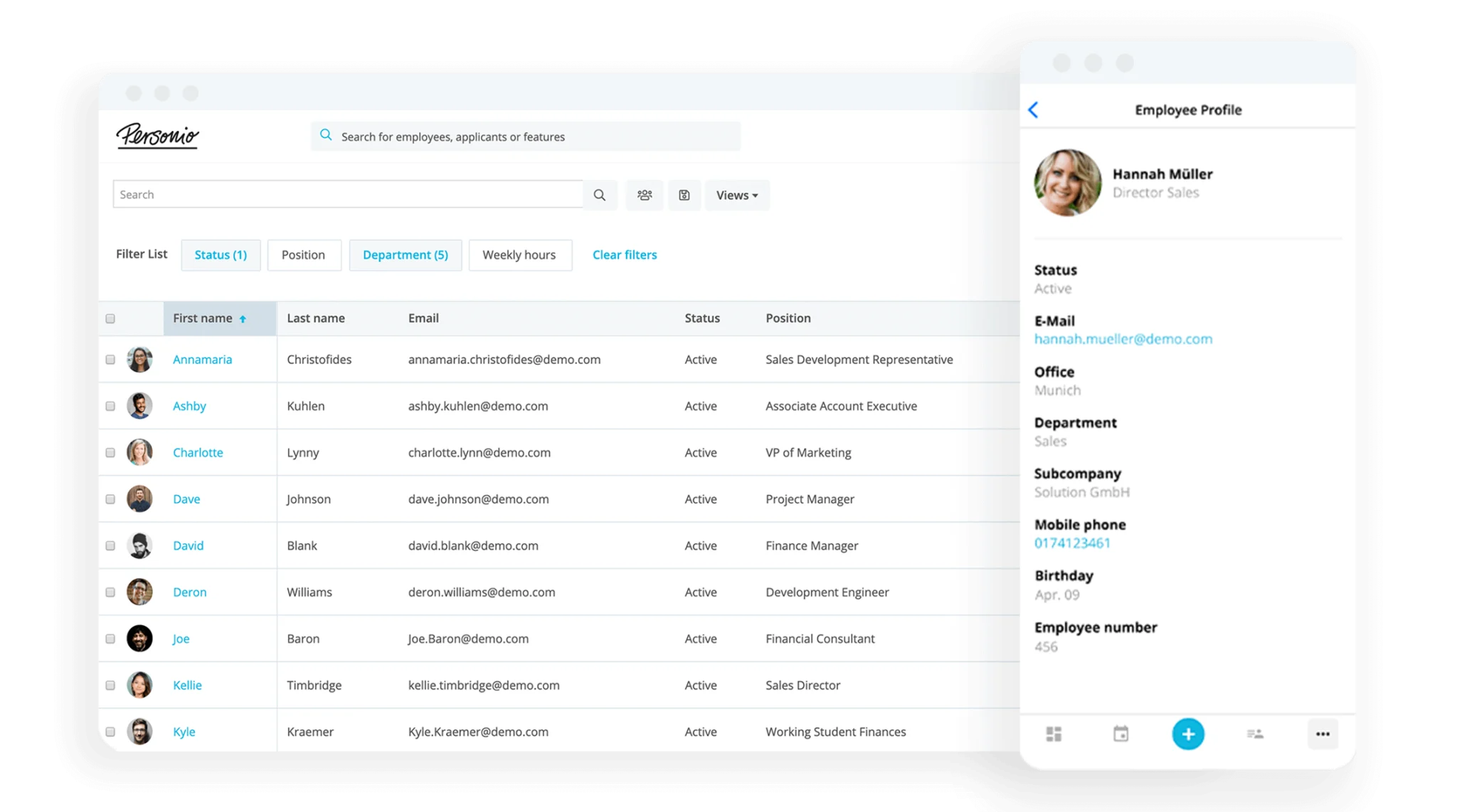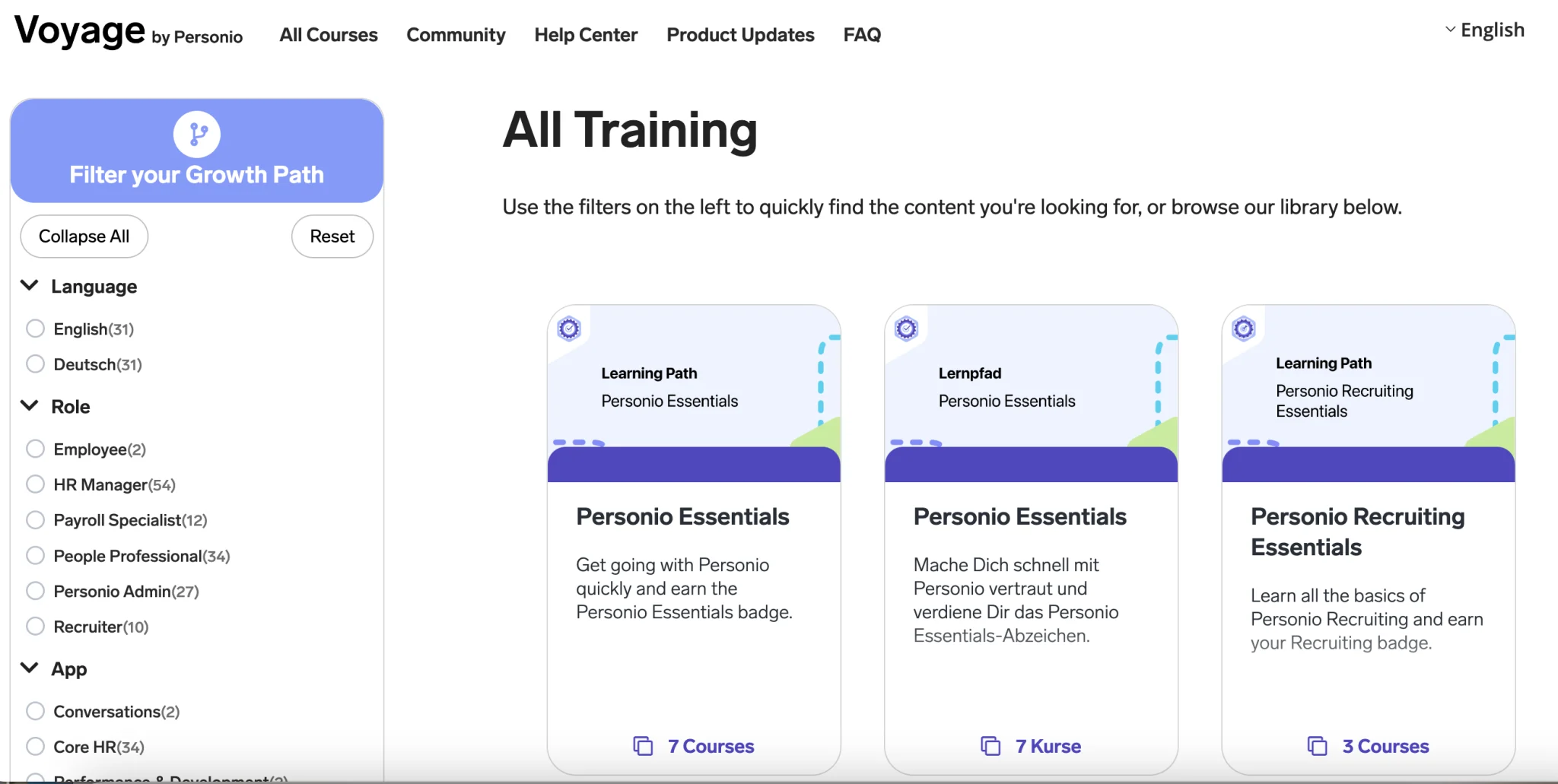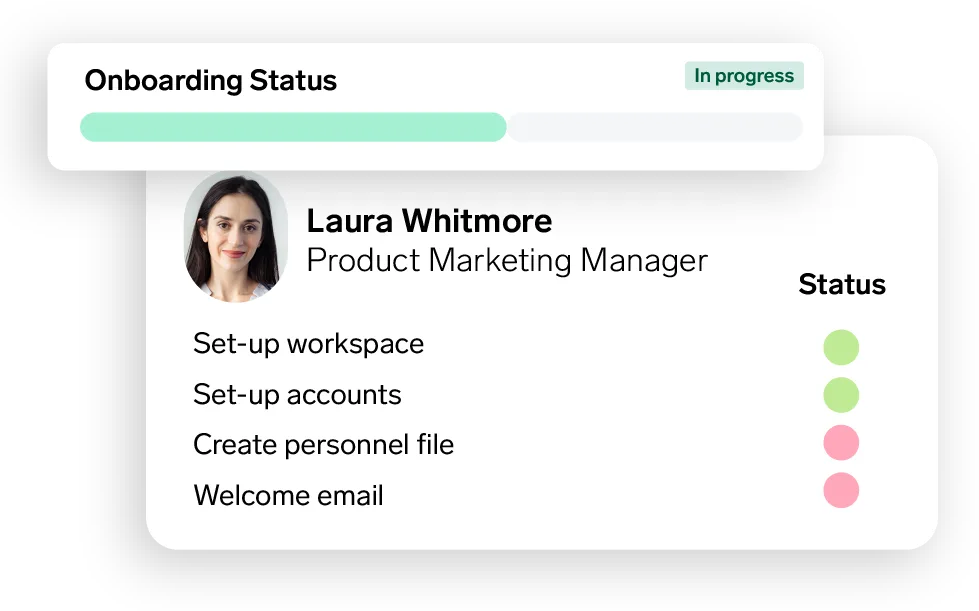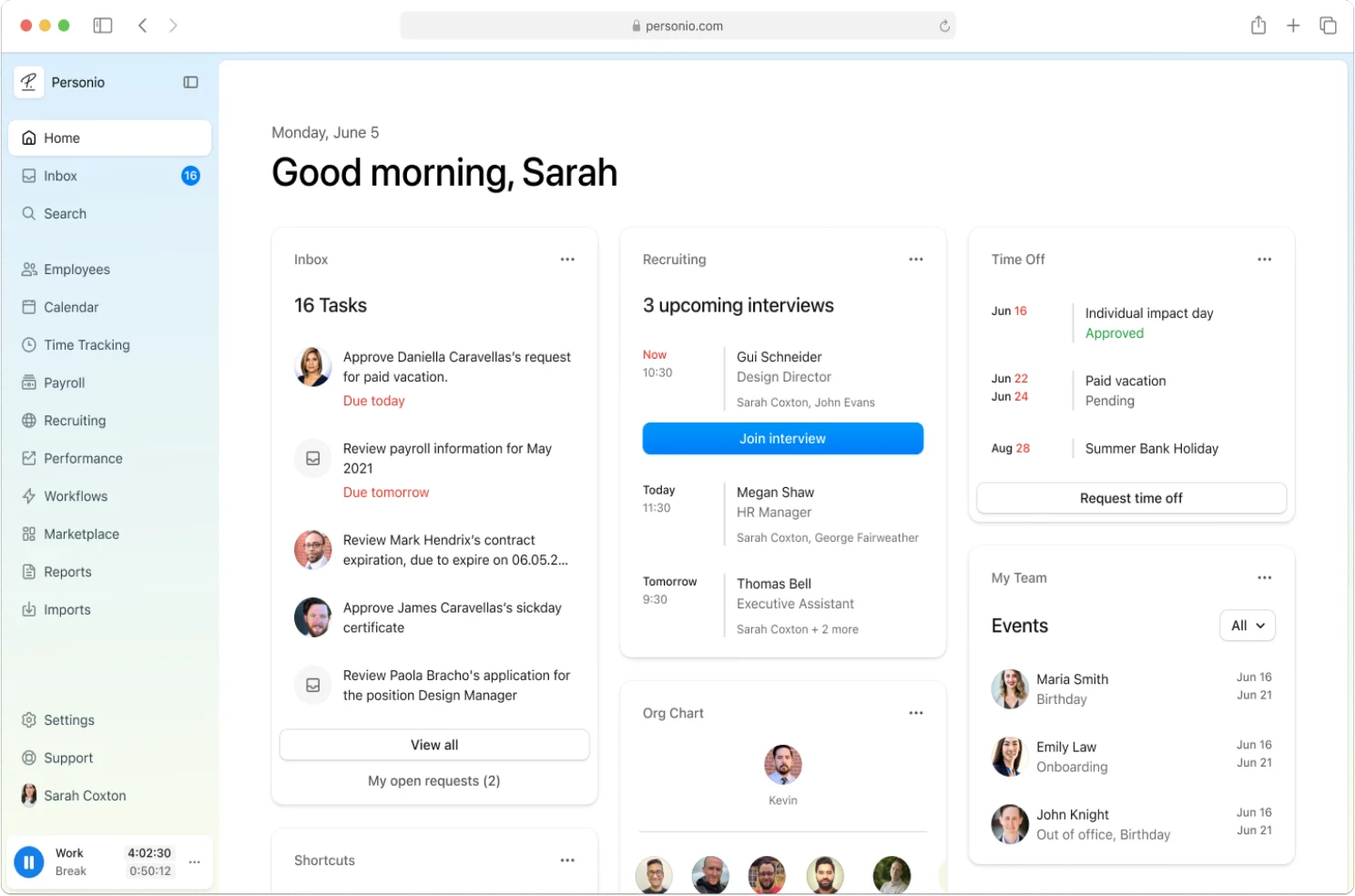How to Implement an HR Software in 6 Weeks or Less

How long does it take to implement a brand new HRIS? In truth, it depends on who you choose to help manage your HR work. At Personio, we focus on a structured and holistic implementation plan to help busy HR teams get up and running as soon as possible.
In this article, we'll tell you a little bit more about to implement an HRIS, how the process typically plays out, some best practices to follow and more.
You can gain a complete overview of implementing Personio's HR software right here.What is an HRIS?
A human resources information system (HRIS) is a software solution designed to manage and automate HR processes. It is significant in modern HR management as it helps streamline administrative tasks, improve data accuracy, and enhance decision-making capabilities. By centralising HR data, an HRIS enables better compliance, reporting, and overall efficiency.
An HRIS implementation involves introducing new HR software to your organisation, encompassing evaluation, selection, testing and integration into your tech stack.
How to choose the right HRIS
The process of implementing an HR software of any kind starts by evaluating your needs and selecting the right solution.For most teams, that process is going to look fairly similar and will follow a certain order:
1. Assessing organisational needs
The first step in implementing an HRIS is to evaluate your organisation's needs and select the right solution. This involves:
Making a list of potential providers
Speaking with those providers
Conducting research through free trials or personalised demos
Considering your budget and HR software pricing
Making the final decision
2. Conducting thorough research
Researching and comparing HRIS vendors is crucial. Look for reviews, case studies and testimonials. Utilise resources such as industry reports and expert recommendations to make an informed choice.
3. Budget considerations
Evaluate both upfront and ongoing costs of the HRIS. Consider the total cost of ownership, including potential hidden costs such as implementation fees, training, and support.
4. Gathering stakeholder input
Involve various stakeholders in the selection process. Their input is vital in ensuring the chosen HRIS meets the needs of all departments and users.
What is the HRIS implementation process?

The process of implementing a new HR software takes place in five unique steps:
Step one: Designing a comprehensive project plan
Create a detailed implementation plan with a clear vision, realistic timeline and communication strategy. The process of implementing a new HR software typically involves five steps: designing, building, testing, rolling out and iterating. At Personio, we view this as a holistic process that scales with your team and evolves with your needs.
Ask yourself some of the following:
Are you looking to digitise your administrative tasks?
Do you need a digital solution that helps recruit top talent?
Would you rather have many complex functions or a user-friendly interface?
It’s not just about the individual questions, though, but about the collective needs of your HR team and what a tool would be able to provide. In that sense, it helps to think about what you need today, what you might like, and what you might need or like in the future. Any prospective tool should have a little bit from each column.
Step two: Building and configuring the HRIS
Configure the HRIS to meet organisational needs and prepare for data migration. This involves discussing unique needs and required customisations to ensure the system aligns with your processes.
Step three: The great data migration
Transfer important employee data into the new system. Data migration can take between four to eight weeks, depending on company size and data quality. This process can be done gradually and with the help of employee self-service (ESS) to reduce the workload.
First and foremost, the data migration phase during HRIS implementation doesn’t have to go from 0 to 100. It can be done gradually and over time, and likely should be done with the help of ESS (again, another key requirement of a great HRIS).
The time required for data migration, overall, will depend generally on:
The size of the company
The complexity of the chosen HRIS software
The quality of current data
Data migration with Personio takes an average of four to eight weeks, from start to finish. During this time, HR and employees can continue to work normally, but it’s the kind of up-front investment that truly pays dividends in the long run.
Here’s an example: A recent customer has almost 1,000 employees, and the entire implementation (including data migration) was completed in six weeks flat. From then on, everything worked in the new system!
Step four: Testing the system
You can only find out if an HRIS is right for your team by trying it out! Pilot the system with people from across your organisation to ensure everything works correctly. Testing is crucial to identify and resolve any issues before the full rollout.
To adequately prepare for any prospective HRIS implementation, take the time to test and involve stakeholders (executives, managers, employees) who would theoretically work with any incoming tool. A proper HRIS vendor will also afford you the chance to take their software for a spin, too.
Step five: Rolling out the HRIS
Introduce the new system to the wider organisation and employees. Ensure a smooth rollout by conducting risk assessments, providing thorough training and communicating the benefits effectively.
Post-implementation evaluation and upkeep
Evaluate the implementation process and the success of the HRIS. Continuous support and updates are essential to ensure the system meets evolving business needs. Regularly review and optimise the HRIS to maintain its effectiveness.
HRIS implementation checklist
We put together this quick checklist to help guide your team through the process of implementing a new HR system.
Who is the main point of contact for this project?
Which other stakeholders need to be involved?
Who could help support or test your new software as a pilot group?
Does your new system meet your requirements?
Does it have the features you need or will need in the future?
Do they have a streamlined and supportive implementation process?
What are there data security standards like?
What is your timeline for implementing a new solution?
Do you need to cancel a solution you're currently using?
How much data do you need to transfer into your new system?
Can you transfer data from your old system into your new one?
Who will test your new system?
Employees?
Line managers?
Executives or senior leaders?
Schedule a testing period and then a 'go-live' date for your entire organisation?
Will you run trainings for your entire organisation?
To be clear, this is just a starting point and is not an exhaustive list of how implementation might look at your company. The most important thing is to partner with an HRIS provider that can help map out a journey that makes sense for your organisation.

Best practices for HRIS implementation
Best Practice | Explained |
|---|---|
Prioritise effective and clear communication | Clear and engaging communication is vital throughout the implementation process. Announce the new HRIS, lay out the benefits for every employee, and share your goals with management. |
Take a top-down approach | Gain support from leadership and involve key stakeholders. Address the entire workforce to increase adoption and engagement rates. |
Define roles and rights from the start | Identify roles in your company and define what they should be allowed to do within the HRIS. This ensures that permissions and access levels are appropriately managed. |
Actively involve other departments | Engage other departments like finance and office management to ensure a smooth implementation. Their involvement is crucial for comprehensive system integration. |
Ensure you have a clear project plan | Work with the HRIS implementation team to devise a project plan covering key dates, decisions, and communication points. A well-structured plan ensures a streamlined process. |
How long does it take to implement an HRIS?
On average, Personio can be implemented as a new HRIS for your team in around six weeks. Of course, this may vary depending on the needs of your organisation.
That said, a proper implementation process will always be fully transparent and completely mapped out. There should always be a game plan in place.
Of course, your ability to implement a new HRIS will depend on some additional key factors worth considering:
Technical requirements – A strong HRIS will be user-friendly so that anyone on your HR team (or across your organisation) can use it with ease. No massive technical requirements or background knowledge is required, all it takes is a few lessons and you’re up and running!
Implementation support – Even the best HRIS will flounder if the implementation process isn’t designed specifically to support both it and an organisation. At Personio, we place particular emphasis on the implementation process, with outlined steps and timeframes for maximum transparency for new customers.
Employee self service (ESS) – Employees being able to add their own data to an HRIS is massive for HR teams everywhere, because the input process can be outsourced while still keeping a very high bar of quality. An HRIS with an ESS function is helpful because it can reduce the data transfer time drastically.
Best practice: A contact person is key. Who will lead the project? Who else will be involved? Try to plan by starting with six weeks of dedicated time to help make it a reality (and to avoid things lagging for too long).
Personio: An ideal partner in implementation

There's a reason why Personio's HRIS focuses so heavily on the implementation process. That's because it helps our customers get back to doing impactful work, rather than feeling the pinch of overwhelming administrative work.
“From the field: Feedback from our own customers at Personio finds that the majority benefit from greater process clarity, automation, data storage and overall security. Personio also helps ‘raise the organisational profile’ of HR in the eyes of a company.
We know that great HR is better for business, and that HR does its best work when they're not bogged down. That's why we focus on a speedy and supportive process to get you up and running sooner than later.
If you want to learn more about Personio, we'd recommend speaking with an expert today or kicking off a free trial right this instant. You'll immediately be able to see what we mean when we say that great HR can't be hold back by administrative tasks.
Implementing an HRIS is a strategic process that requires careful planning and execution. By following this comprehensive guide, you can ensure a successful integration that enhances HR efficiency and supports organisational growth. Start a free trial or contact us for more information to see how our HRIS solution can benefit your organisation.

